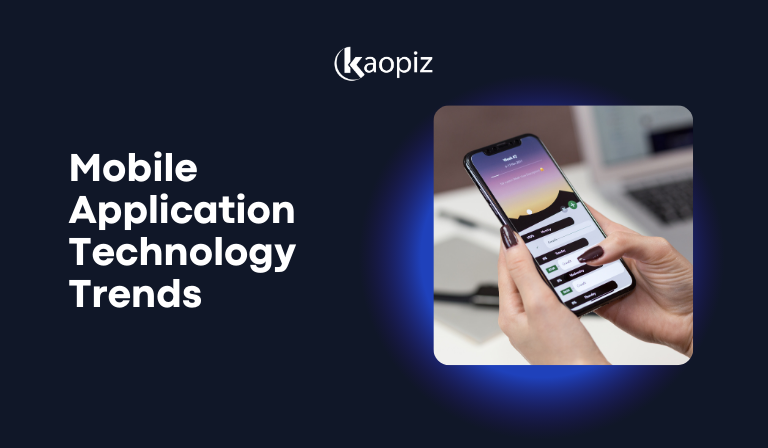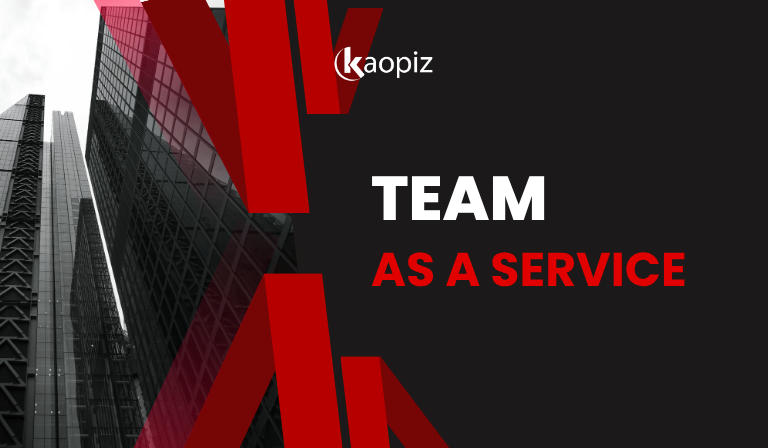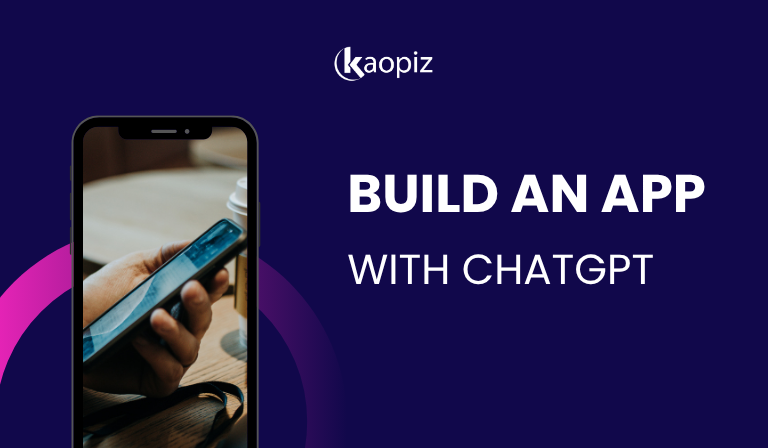Software Frameworks – How Singapore Businesses Can Choose the Right Framework for Project (2025 Guide)
In Singapore’s fast-paced digital economy, businesses must innovate quickly while keeping costs in check. The right software framework—whether it’s React, Flutter, or TensorFlow—helps speed up development, improve scalability, and ensure security for apps like fintech platforms, e-commerce sites, or AI-powered solutions.
Choosing software frameworks can be challenging. Many Singapore companies partner with offshore experts like Kaopiz, whose 600+ engineers guide them in selecting and implementing the best solutions. This guide explores framework types, selection tips, and how outsourcing drives success in 2025 and beyond.
Table of Contents
- What Are Software Frameworks?
- What Are the Differences Between Software Framework vs Library?
- How Do Software Frameworks Work?
- Why Software Frameworks Matter for Singapore Businesses
- Types of Software Development Frameworks
- How to Choose the Right Framework for Your Project
- Potential Challenges of Using Software Frameworks
- Why Partner with an Offshore Software Development Company
- Future Trends in Software Frameworks (2025 and Beyond)
- Conclusion
- FAQs
What Are Software Frameworks?
A software framework is a pre-built foundation of code, tools, and best practices that helps developers build applications faster and more efficiently. Instead of starting every project from scratch, a coding framework provides ready-to-use structures such as templates, libraries, and reusable components. This accelerates development while ensuring consistency, scalability, and security across the entire application.
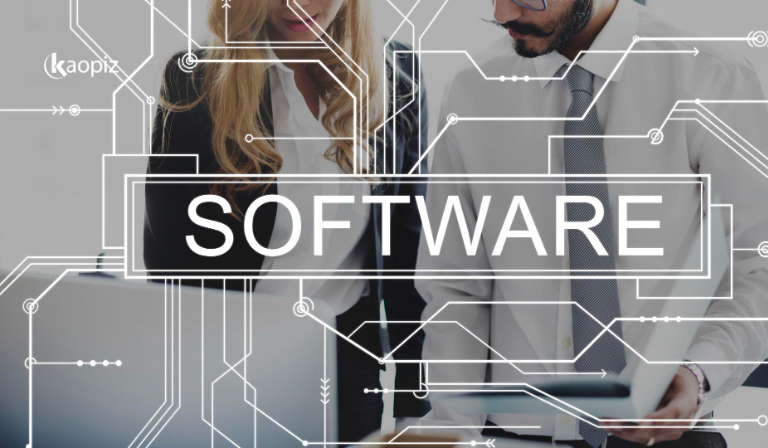
Think of a framework like the foundation of a building. Just as architects use blueprints to construct stable, reliable structures, developers use frameworks to create robust software.
With frameworks for software development, teams can focus on building unique features that differentiate their product — whether it’s a fintech app, e-commerce platform, or AI-powered solution — rather than spending time reinventing basic functions like user authentication, data storage, or API integration.
What Are the Differences Between Software Framework vs Library?
When building software, developers often rely on frameworks and libraries — but these two tools are not the same. Understanding their differences is crucial for choosing the right approach and ensuring smooth development.
A software framework provides a structured foundation for building applications. It dictates the architecture and flow of the program, meaning the framework calls your code and determines how different components interact. This approach enforces best practices and consistency, making it ideal for complex, large-scale projects.
Examples of software frameworks include React, Django, and Spring, which provide built-in solutions for common tasks like routing, authentication, and database management.
In contrast, a library is a collection of reusable functions or utilities that developers call when needed. Unlike frameworks, libraries don’t control the overall flow of the application. They simply provide tools to perform specific tasks, giving developers more flexibility and control. Popular libraries include NumPy for data analysis and Lodash for JavaScript utilities.
Here’s a simple comparison between software framework vs library:
| Aspect | Framework | Library |
|---|---|---|
| Control Flow | The framework calls and organizes your code. | You call the library functions directly. |
| Scope | Provides a complete structure for app development. | Focused on specific tasks or features. |
| Learning Curve | Higher, due to enforced rules and architecture. | Lower, easier to adopt for quick solutions. |
| Examples | React, Django, Spring Boot | Lodash, NumPy, Pandas |
Key takeaway:
- Use a framework when you need a standardized, scalable structure, especially for mobile, web application platforms, or enterprise systems.
- Use a library when you need flexibility or to handle smaller, specific tasks.
- Many modern projects combine both — for instance, using a framework like React to build the app while leveraging libraries like Lodash to handle data manipulation.
How Do Software Frameworks Work?
Software frameworks work by providing a predefined structure and set of rules that guide how developers build and organize their applications. Instead of writing every feature from scratch, developers plug their custom code into the framework, which handles many core functions automatically. This makes development faster, more efficient, and less error-prone.

At the heart of most frameworks is the Inversion of Control (IoC) principle — meaning the framework calls your code, rather than your code controlling the flow. This is sometimes described as the “Hollywood Principle”: “Don’t call us, we’ll call you.” By following this pattern, the framework enforces best practices and ensures that all parts of the application work together seamlessly.
Here’s how it typically works step by step:
- Base Structure: The framework provides the foundational components, such as file organization, routing, and database connections.
- Reusable Modules: Built-in features like authentication, session handling, and API management are ready to use.
- Developer Code Integration: Developers focus on creating unique business logic and user features that fit into the framework’s structure.
- Execution Flow: The framework coordinates all components, handling requests, data flow, and output automatically.
Example: Imagine building a fintech app in Singapore. A framework like Django will automatically manage database queries, user login systems, and security protocols. Your developers only need to write custom code for your app’s unique features, such as AI-driven fraud detection. This speeds up the development process while ensuring compliance with Singapore’s PDPA and other security standards.
Why Software Frameworks Matter for Singapore Businesses
In Singapore’s fast-moving digital landscape, businesses must balance speed, security, and cost efficiency to stay competitive. The right software framework helps achieve these goals while supporting scalability and compliance.
- Faster Time-to-Market: Frameworks come with ready-made modules like authentication, database management, and routing, so developers don’t have to build everything from scratch.
- Built-in Security and Compliance: Many frameworks integrate security best practices to protect sensitive data and reduce vulnerabilities.
- Scalability for Growth: Frameworks provide a stable foundation that easily supports growing traffic, users, and features without needing a complete rebuild.
- Cost Efficiency Through Offshore Teams: Frameworks reduce the number of development hours needed and pairing them with offshore teams maximizes savings.
- Consistency and Maintainability: Frameworks enforce standard coding structures, making collaboration smoother between local and offshore teams.
By leveraging the right frameworks — and working with an offshore partner like Kaopiz — Singapore businesses can accelerate development, cut costs, and build secure, scalable digital products ready for the future.
Types of Software Development Frameworks
Software frameworks come in many forms, each designed to solve specific development challenges. Below are the most common framework categories that Singapore businesses and offshore teams use to build scalable, secure, and high-performing digital solutions.
Web Development Frameworks
Web development frameworks provide developers with pre-built tools and structures to create scalable, secure, and high-performing web applications. They are generally divided into two categories: front-end frameworks, which focus on the user interface and experience, and back-end frameworks, which handle server-side logic, databases, and APIs.

Front-End Frameworks
Front-end frameworks are responsible for everything users see and interact with on a website or web app. They make it easier to build dynamic, responsive, and visually appealing interfaces while ensuring consistent performance across devices.
- React – A highly popular JavaScript framework for building interactive, component-based user interfaces.
→ Ideal for e-commerce platforms, real-time dashboards, and SaaS products where speed and scalability matter.
- Vue.js – Lightweight and easy to integrate, making it a favorite for smaller teams or projects requiring fast iterations.
→ Great for startups or businesses experimenting with MVPs.
- Angular – A robust, enterprise-ready framework designed for complex web applications.
→ Often used in large-scale business systems and government projects that need strict structure and long-term stability.
Back-End Frameworks
Back-end frameworks manage the server-side operations that power web applications, including database management, API integrations, and business logic. They ensure the application runs smoothly behind the scenes while maintaining high performance and data security.
- Django (Python) – Known for its strong security features and rapid development capabilities.
→ Perfect for fintech and healthcare apps that must comply with Singapore’s PDPA and other strict privacy regulations.
- Ruby on Rails (Ruby) – Speeds up development with a focus on simplicity and productivity.
→ Ideal for startups and SMEs looking to launch MVPs or e-commerce platforms quickly.
- Spring Boot (Java) – A highly scalable, enterprise-grade framework designed for mission-critical systems.
→ Best for banks, ERP systems, and large corporations handling complex data flows.
Mobile Development Frameworks
Mobile development frameworks help developers build iOS and Android apps using a shared codebase, saving time and cost — perfect for Singapore businesses aiming for fast, scalable launches.

- Flutter – Google’s framework for creating high-performance, cross-platform apps with a single codebase.
→ Ideal for fintech, e-commerce, and healthcare apps needing rapid development and consistent design.
- React Native – Facebook’s framework for building native-like apps using JavaScript and React.
→ Great for retail loyalty, real-time chat, or on-demand service apps.
Data Science & Machine Learning Frameworks
Data science and machine learning (ML) frameworks provide the tools and libraries developers need to build AI-powered applications. These AI software frameworks simplify complex tasks like data processing, model training, and prediction, making it easier for businesses to integrate AI into their products.
- TensorFlow – An open-source framework by Google, widely used for deep learning, natural language processing, and computer vision.
→ Ideal for fraud detection, predictive analytics, and AI-powered healthcare diagnostics.
- PyTorch – A flexible, developer-friendly ML framework popular for research and production-ready AI models.
→ Perfect for chatbots, recommendation engines, and personalization features in e-commerce and fintech.
Agile Software Development Frameworks
Agile software development frameworks help teams plan, manage, and deliver projects more efficiently by breaking work into smaller, iterative cycles. This approach promotes flexibility, transparency, and faster releases, which is especially valuable for Singapore businesses working with offshore development teams.

- Scrum – Focuses on sprints and regular feedback loops, making it ideal for projects that require continuous improvement and close collaboration.
→ Commonly used for startups, SaaS products, and fast-evolving applications.
- SAFe (Scaled Agile Framework) – Designed for large enterprises, SAFe coordinates multiple teams working on complex projects with enterprise-level structure and governance.
- Kanban – Visualizes workflows to improve task management and productivity, ensuring teams can adapt quickly to changing priorities.
→ Perfect for maintenance projects and ongoing development.
Enterprise-Level Frameworks
Enterprise-level frameworks are designed to build large-scale, mission-critical systems that require high performance, reliability, and strong security. These frameworks are ideal for industries like banking, healthcare, manufacturing, and government, where applications must handle complex data and meet strict compliance standards.
- Spring Boot (Java) – A powerful framework for creating scalable enterprise applications with robust security features and seamless integrations.
→ Ideal for banking systems, ERP platforms, and corporate web services.
- .NET (Microsoft) – Supports building cross-platform enterprise solutions with excellent performance and built-in security.
→ Perfect for government tech, healthcare management systems, and large corporate applications.
How to Choose the Right Framework for Your Project
Choosing the right software framework is vital for your project’s success, scalability, and cost efficiency.

Here are key factors Singapore businesses should consider before deciding:
- Define your project type and goals: Identify whether you’re building a web app, mobile app, AI solution, or enterprise system. Framework software examples: Use React for dynamic web UIs, Flutter for cross-platform apps, or TensorFlow for AI-driven features.
- Consider scalability and performance: Select a framework that can grow with your business, handling rising traffic and complex integrations. For instance, React or Spring Boot are ideal for e-commerce platforms that scale during seasonal peaks.
- Prioritize security and compliance: For industries like finance and healthcare, choose frameworks with strong built-in security features. Django and Spring Boot help meet Singapore’s PDPA and global compliance standards.
- Assess team expertise: Consider your team’s familiarity with the framework. If skills are lacking, offshore experts like Kaopiz can provide experienced developers for faster, error-free development.
- Evaluate community support and longevity: Frameworks with active communities and strong documentation make problem-solving easier. Popular choices like React, Flutter, and TensorFlow are reliable for long-term projects.
- Balance budget and timeline: Some frameworks require more resources to implement. Cross-platform solutions like Flutter reduce time and costs by enabling iOS and Android development with a single codebase.
Pro Tip: Partnering with Kaopiz ensures you select the best framework, implement it correctly, and scale it effectively. Their offshore teams provide end-to-end support, delivering secure and future-ready solutions for Singapore businesses.
Potential Challenges of Using Software Frameworks
While software frameworks accelerate development and improve scalability, they also come with potential risks. The table below highlights common challenges and how businesses in Singapore can address them effectively.
| Challenge | Description | Solution |
|---|---|---|
| Steep Learning Curve | Some frameworks require specialized skills, slowing down development at the start. | Offshore partners like Kaopiz provide skilled engineers who are already proficient, reducing onboarding time. |
| Performance Overhead | Built-in features can cause slower performance if not optimized. | Proper configuration and optimization ensure smooth operation for fintech or e-commerce apps. |
| Security Vulnerabilities | Outdated frameworks can create cybersecurity risks and non-compliance issues. | Regular maintenance and updates to meet PDPA and global security standards. |
| Compatibility Issues | Difficulties may arise when integrating frameworks with legacy systems or third-party tools. | Skilled developers customize integrations to ensure seamless, disruption-free connections. |
| Framework Lock-In | Relying too heavily on one framework limits flexibility if business needs change. | Plan architecture for future upgrades or migrations to avoid lock-in problems. |
| Resource & Cost Management | Some frameworks demand larger teams or more infrastructure, increasing costs. | Outsourcing to an offshore company like Kaopiz provides scalable teams to match your project’s size and budget. |
Key takeaway: By recognizing these challenges early and working with experienced partners, Singapore businesses can mitigate risks, maintain project quality, and fully leverage the benefits of modern frameworks.
Why Partner with an Offshore Software Development Company
Choosing the right software framework is only part of building a successful project. By partnering with an offshore development company like Kaopiz, Singapore businesses gain access to specialized talent, lower costs, and faster delivery, ensuring their applications are built efficiently and to global standards.
Benefits of Outsourcing
Outsourcing software development offers Singapore businesses a cost-effective and flexible way to build digital solutions without the overhead of hiring and managing a large in-house team. Here are some key benefits:
- Cost Savings: Reduce expenses on recruitment, training, and infrastructure (up to 40-60%) by leveraging offshore teams with competitive rates.
- Access to Specialized Talent: Tap into a global pool of skilled engineers experienced with modern frameworks like React, Flutter, and TensorFlow.
- Faster Time-to-Market: With 24/7 development cycles across time zones, projects move forward more quickly.
- Scalable Teams: Easily scale development teams up or down based on project needs.
- Focus on Core Business: Free up internal resources to concentrate on strategy, sales, and customer experience, while offshore teams handle technical execution.
By partnering with IT outsourcing companies in Singapore, businesses can innovate faster, reduce risks, and build secure, future-ready digital solutions without overextending internal teams.
How Kaopiz Helps You Select and Implement the Right Framework
Choosing and implementing the right software framework can be overwhelming, especially with so many options available. With over 10 years of experience and a proven track record, Kaopiz, with great IT outsourcing services helps Singapore businesses make smart technology decisions and execute them flawlessly.
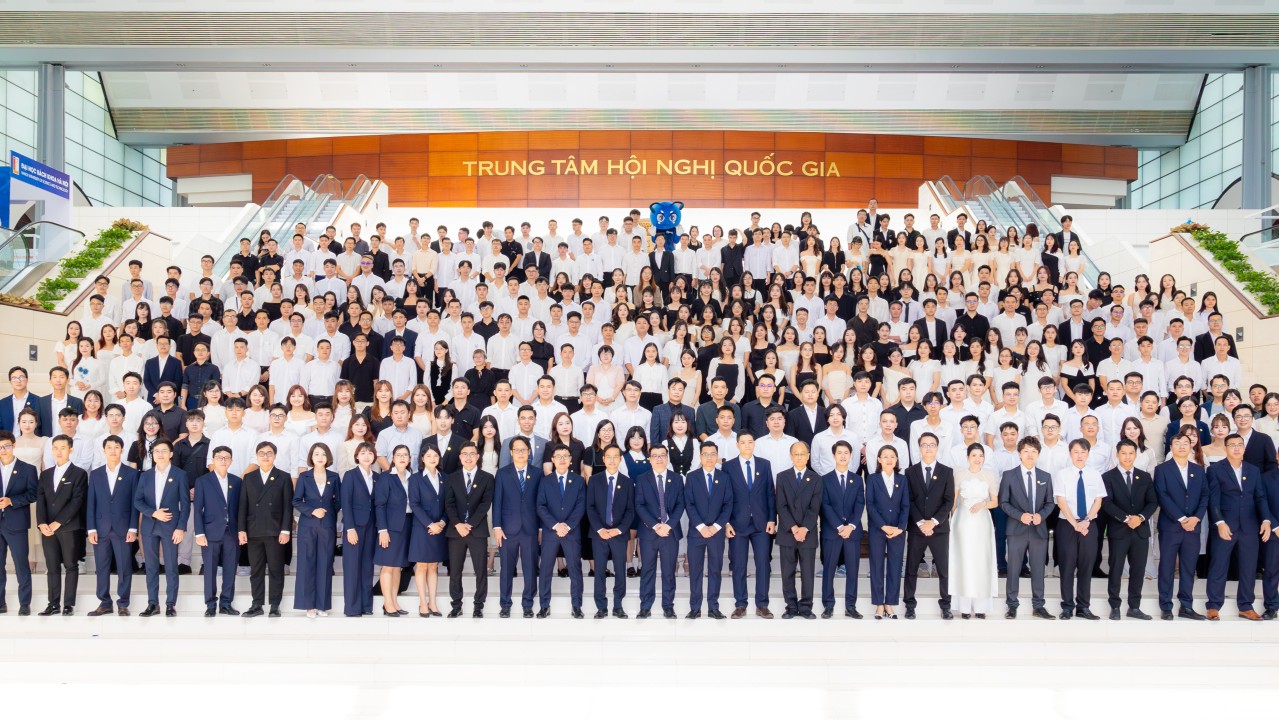
- Deep Experience Across Industries: Kaopiz has completed 1,000+ projects for 200+ global clients across fintech, healthcare, retail, education, and government tech. This diverse experience allows us to recommend the most suitable framework for your unique business needs.
- Trusted by Leading Companies: 98% satisfaction rate reflecting the trust built through reliable delivery and long-term partnerships.
- Expertise Across Modern Frameworks: Our 600+ professionals are experts in frameworks like React, Django, Flutter, TensorFlow, and Spring Boot, covering web apps, mobile, AI, and enterprise-grade solutions.
- Proof of Concept (POC) for Risk-Free Decisions: We create POCs to test performance and fit before scaling development, ensuring you invest in the right technology from the start.
- Agile Offshore Development Process: With Agile practices like Scrum and Kanban, our offshore teams deliver faster iterations, clear communication, and seamless collaboration with your in-house team.
- Security and Compliance: Kaopiz builds solutions that comply with Singapore’s PDPA and global standards — a must for finance, healthcare, and government sectors.
- Long-Term Support and Scalability: We don’t just launch your product; we provide ongoing maintenance and updates, helping your solution evolve as your business grows.
By partnering with Kaopiz, you gain an offshore team that blends deep technical expertise with proven experience and client satisfaction, ensuring your project is delivered on time, on budget, and built to scale.
Future Trends in Software Frameworks (2025 and Beyond)
The software development landscape is evolving rapidly, and software frameworks are at the center of this transformation. For Singapore businesses, staying ahead of these trends is essential to remain competitive, secure, and innovative. Here are the key trends shaping the future of frameworks in 2025 and beyond:
- AI-Powered Development Frameworks: Frameworks are integrating artificial intelligence to automate repetitive tasks like code generation, testing, and bug detection.
- Rise of Agentic AI and Automation: Advanced frameworks will support agentic AI, where software agents can autonomously handle complex workflows, such as monitoring system performance or adjusting resources in real time.
- Serverless and Cloud-Native Frameworks: As businesses shift to the cloud, frameworks will increasingly support serverless architectures and cloud-native development.
- Low-Code and No-Code Integration: Frameworks will blend with low-code/no-code platforms, empowering non-technical teams to collaborate in the development process.
- Enhanced Security Features: With cyber threats on the rise, frameworks will include built-in security protocols to meet stringent regulations like Singapore’s PDPA and international data privacy laws.
- Agile and Remote Collaboration Support: As global teams become the norm, frameworks will evolve to support distributed development environments and Agile offshore workflows, improving collaboration between local and offshore teams.
Conclusion
Choosing the right software framework is essential for Singapore businesses to innovate faster, stay secure, and scale efficiently. The right framework accelerates development, reduces costs, and supports long-term growth, while the wrong choice can lead to delays and technical challenges.
By understanding different framework types and aligning them with your business goals, you can build secure, high-performing digital solutions that meet both customer expectations and compliance requirements. Partnering with experienced development teams can make this process smoother and more efficient, ensuring your project is ready to thrive in 2025 and beyond.
FAQs
- Is Python a Software Framework?
- No, Python is a programming language, not a framework. However, Python has many popular frameworks built on top of it, such as Django for web development and TensorFlow for machine learning.
- What Are Frameworks with Examples?
-
A framework is a pre-built structure that simplifies software development by providing reusable code and tools.
Examples:
– Web development: React, Django, Ruby on Rails
– Mobile development: Flutter, React Native
– AI development: TensorFlow, PyTorch - What Are the Most Popular Software Frameworks Today?
-
Some of the most widely used frameworks in 2025 include:
- React – Dynamic web interfaces
- Django – Secure, scalable web backends
- Flutter – Cross-platform mobile apps
- TensorFlow – Machine learning and AI
- Spring Boot – Enterprise-level applications
- Which Frameworks Are Best for AI Applications?
-
- TensorFlow – For deep learning, computer vision, and natural language processing.
- PyTorch – Flexible and developer-friendly for AI research and production.
- Scikit-learn – For traditional machine learning algorithms and data analysis.
- How Can a Software Development Company in Singapore Help Me Choose the Right Framework?
- A local or offshore software development company can analyze your business needs, industry compliance requirements (like PDPA), and technical goals to recommend the best framework. Companies like Kaopiz also provide skilled engineers to implement and maintain the solution, ensuring it’s secure, scalable, and future-ready.
















